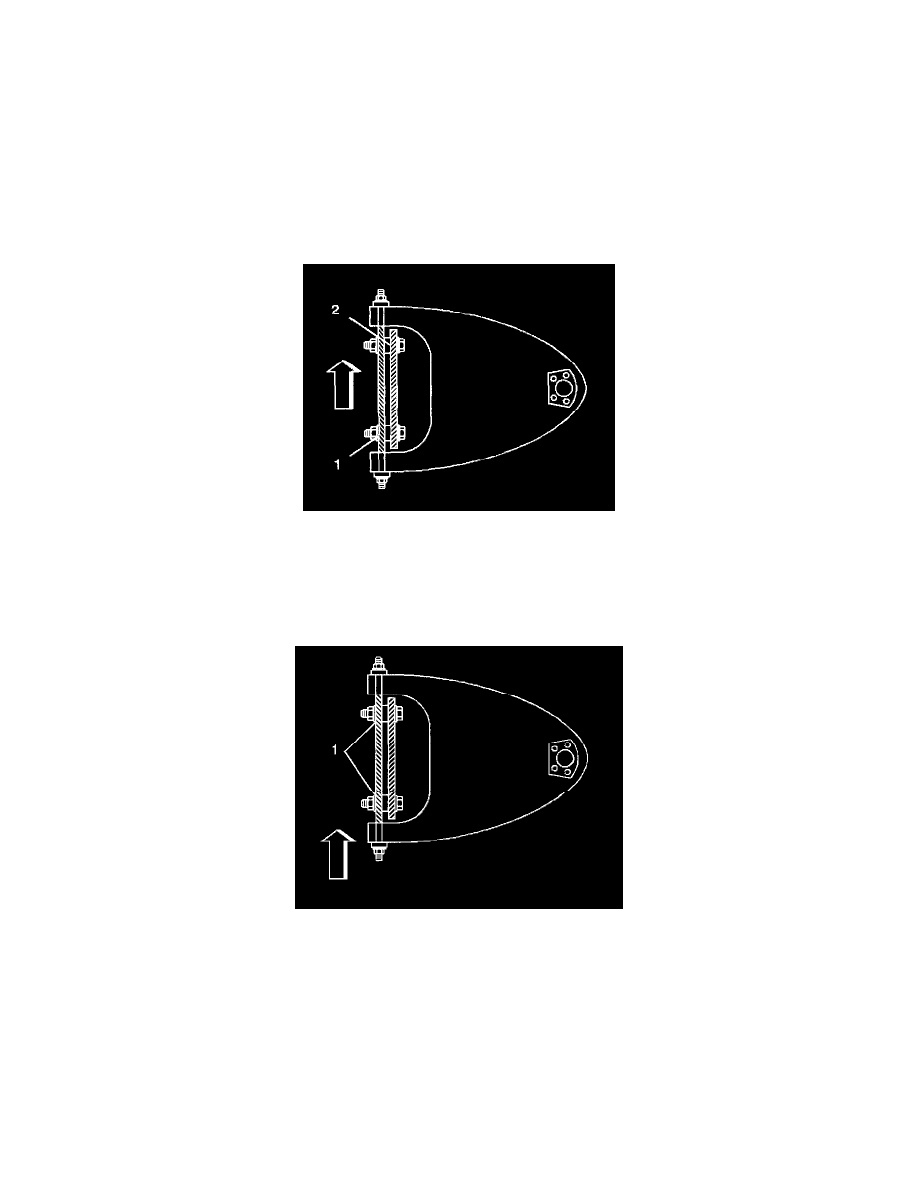S15/T15 Sonoma P/U 2WD L4-2.2L VIN 5 Flex Fuel (2001)

Alignment: Service and Repair
Front Wheel Alignment
Front Caster and Camber Adjustment
Front Caster and Camber Adjustment (RWD)
Important: Before you adjust caster and camber angles, raise and release the front bumper. Do this twice in order to allow the vehicle to return to a
normal height. Refer to Wheel Alignment Specifications.
1. Adjust the caster and the camber by inserting shims between the upper control arm shaft and the frame bracket. Add shims or subtract shims or
transfer shims in order to change the readings.
2. In order to adjust the caster and the camber, loosen the upper control arm shaft-to-frame nuts (1). Add shims or remove shims (2) as required.
Tighten the nuts. Check the toe after you change the caster and the camber.
3. Caster-Transfer the shims from front to rear or from rear to front. The transfer of one shim from the rear bolt to the front bolt decreases positive
caster.
4. Camber-Change the shims at the front and the rear of the cross shaft. Add an equal number of shims at the front and the rear of the cross shaft.
This decreases positive camber.
5. A normal shim pack will leave at least two threads of the bolt exposed beyond the nut (1). The difference between the front shim pack and the rear
shim pack must not exceed 10 mm (0.40 inch).
If you cannot meet these requirements, check for damage to the control arms and to related parts.
6. Tighten the nut on the thinner shim pack first.
This improves the shaft-to-frame clamping force. This also improves torque retention.
Front Wheel Toe Adjustment
Front Toe Adjustment
Tie rod adjuster parts often rust in service. Discard the nuts and the bolts if the torque required to remove the nut from the bolt exceeds 9 Nm (80 inch
lbs.) after breakaway.
